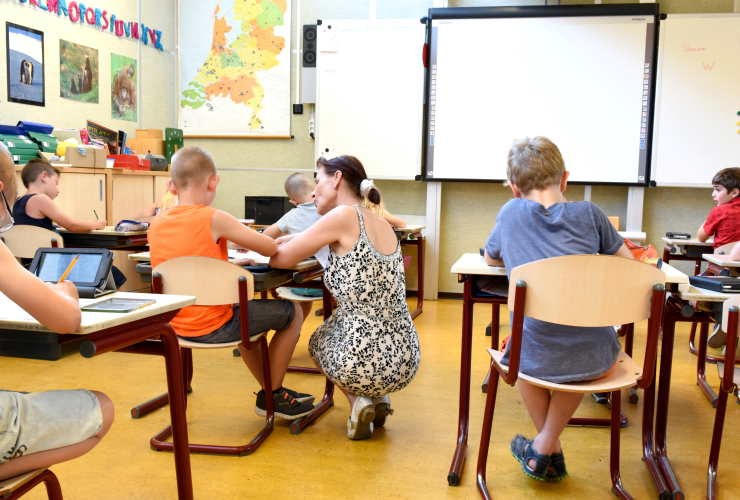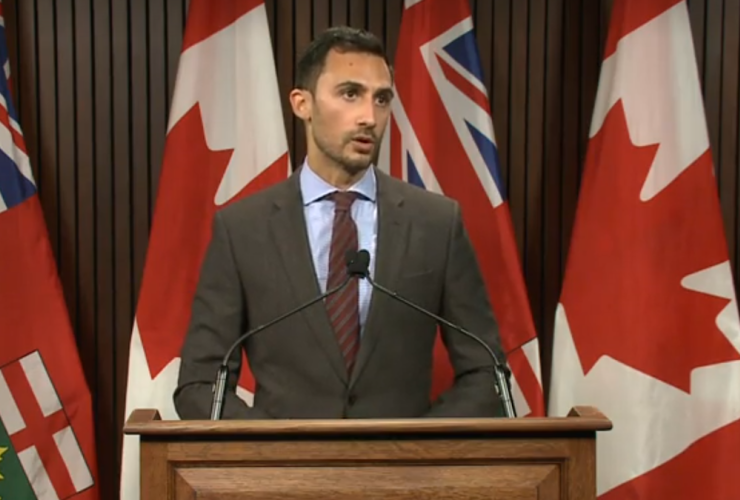Parents, teachers and students at schools in and around Toronto remain in the dark about whether classrooms will reopen on Feb. 10 after the education minister and top health official’s latest pronouncement.
The province will be conducting more asymptomatic testing in schools and allowing teaching students to fill vacancies, the government said in a statement on Monday as it aims to reopen classrooms following an extended closure due to a spike in COVID-19 cases.
But whether classrooms in much of the Greater Toronto Area will reopen next week remains an open question, and when asked whether his ministry might cancel March break in order to make up for lost class time, Education Minister Stephen Lecce said: “That analysis is being done in real-time.”
The province’s chief medical officer of health declined to point to any specific targets when asked what metrics would be used to determine whether and when in-class teaching will resume.
“Not an exact number per se, we would like them all down ideally quite low,” said Dr. David Williams, noting he’d be happy for schools to reopen if community transmission within a public health unit were in the range of 150-200 cases per day.
“We’re hopeful that we’re looking for that Feb. 10th date with all things being in place,” he added.
Ontario reported almost 2,000 new COVID-19 cases on Monday, with far fewer people tested than it has the capacity for. Provincial case numbers have been tracking down since a stay-at-home order was issued in mid-January.
The reopening of schools is a key test for the government, which is facing criticism it has failed to invest enough resources or take tough enough lockdown measures to control the pandemic’s spread in long-term care homes and other congregate settings.
Lecce has insisted Ontario’s schools are safe, but critics question whether reported numbers are artificially low due to insufficient or inadequate testing and tracing of cases.
The initiatives the province announced — which also include making masks mandatory for grades 1 to 3 and enhanced screening for secondary students and staff — are being delivered thanks to a second round of $381 million in federal funding.
Ontario said this will be spent on additional laptops and tablets, online and summer learning supports, better ventilation and other efforts.
Williams said the province worked with a manufacturer to approve a less-intrusive swab for young children, who can find the conventional nasopharyngeal method difficult.
He said cases reported in schools have often also involved family members testing positive, suggesting this meant the virus was being brought into schools rather than spread in them.
“If a health unit is concerned that there may be ongoing spread (in schools), even a possibility of it, test the whole school and see what you find in there,” he said, noting the new announcement should speed up the testing process.
The Opposition NDP said the government’s choices have led to one in every five children under the age of 13 testing positive for the virus and schools closing provincewide this winter.
“We all want kids safely back in school as quickly as possible,” Ontario NDP Leader Andrea Horwath said. “But especially with the new, more infectious variants in our communities, I’m worried that history will repeat itself, students and staff will get sick, and more school closures will follow.”
She called for a comprehensive in-school testing plan across the province, classes of no more than 15 students and paid sick days and family leave days so parents can afford to keep kids at home if necessary.
The Greens’ Mike Schreiner said the new measures took way too long to come and still don’t include efforts to keep class sizes small enough to enable social distancing.
“Today’s news conference failed to answer the questions parents, students and educators have,” he said. “We need transparency from the government and clear benchmarks for when schools are safe to reopen.”
Meanwhile, to help school boards deal with teacher shortages, the province says it is making a temporary change to its teacher certification program, allowing around 2,000 student teachers to fill supply roles. The province had previously allowed boards to bring on retired teachers and principals to fill vacancies.
Around 280,000 students in Ottawa and elsewhere in the province returned to in-class learning on Monday, meaning more than half a million students are now permitted back into class.
The provincial government says school boards spent a combined $130 million on heating, ventilation and air conditioning over the summer and that more than 90 per cent of schools had upgraded or enhanced their air filtration systems.
Morgan Sharp / Local Journalism Initiative / Canada’s National Observer






Comments